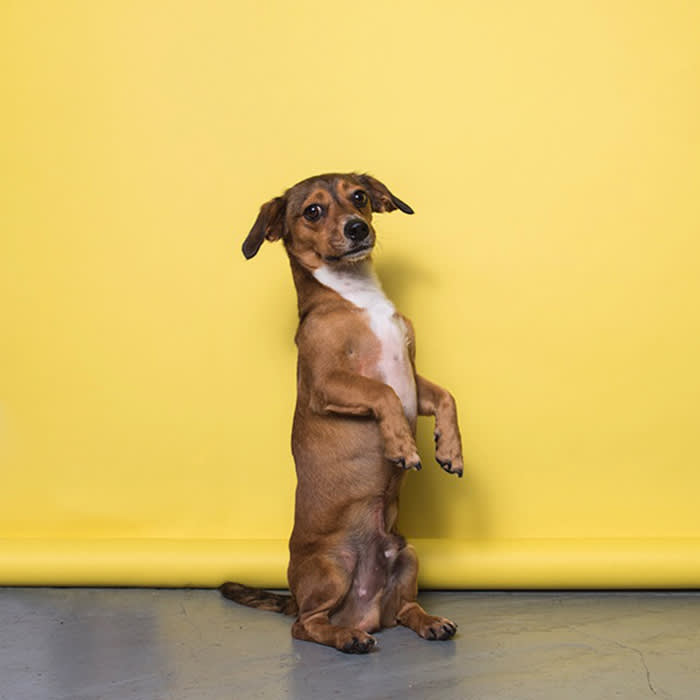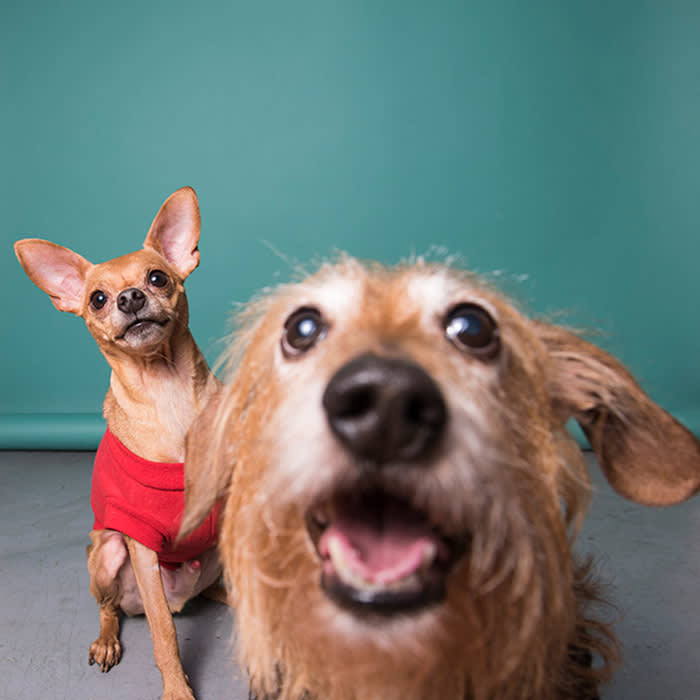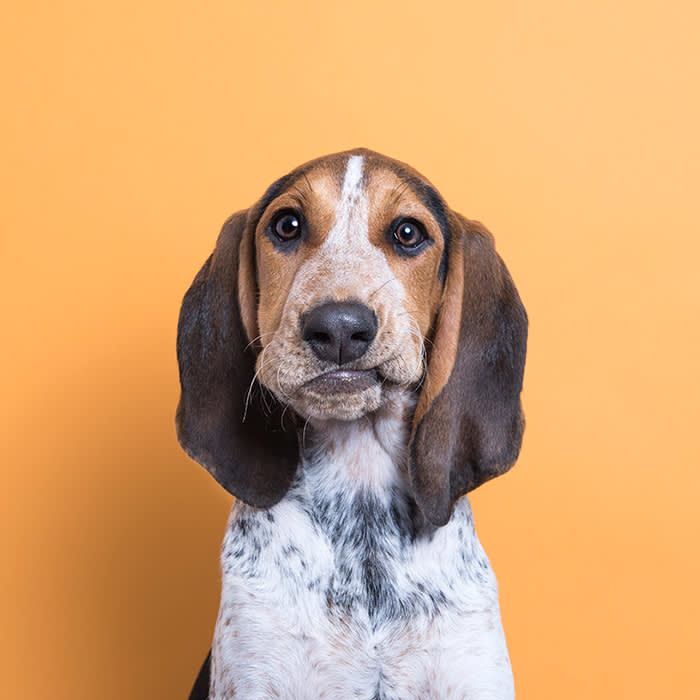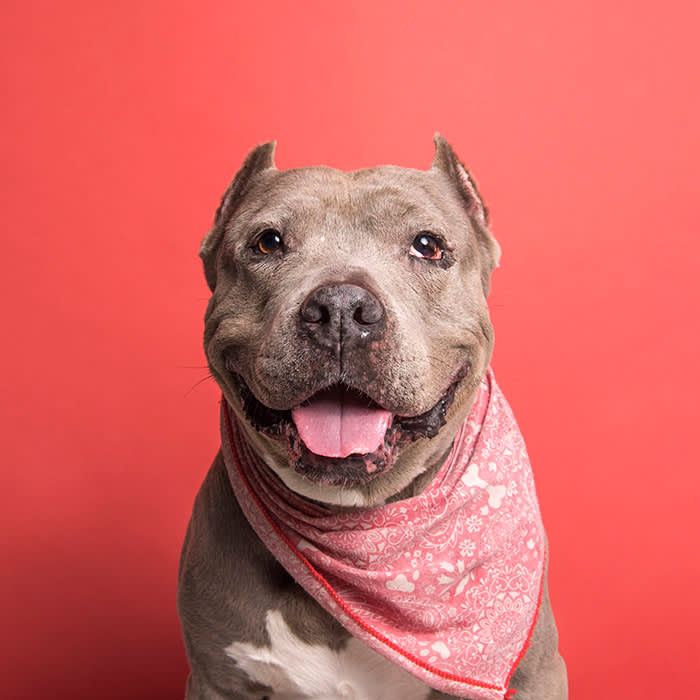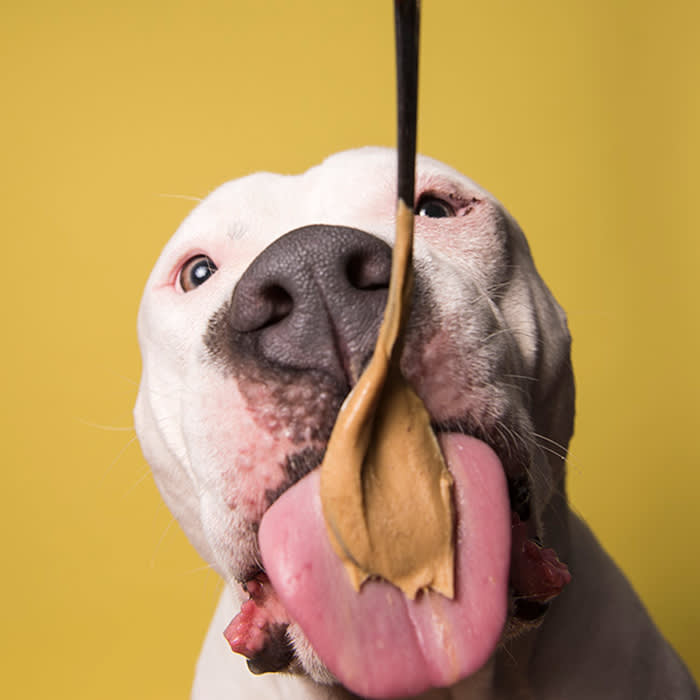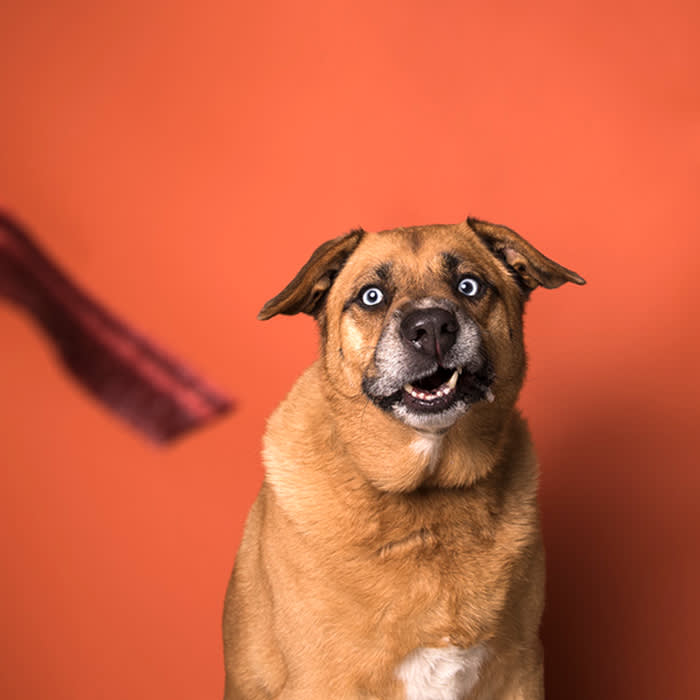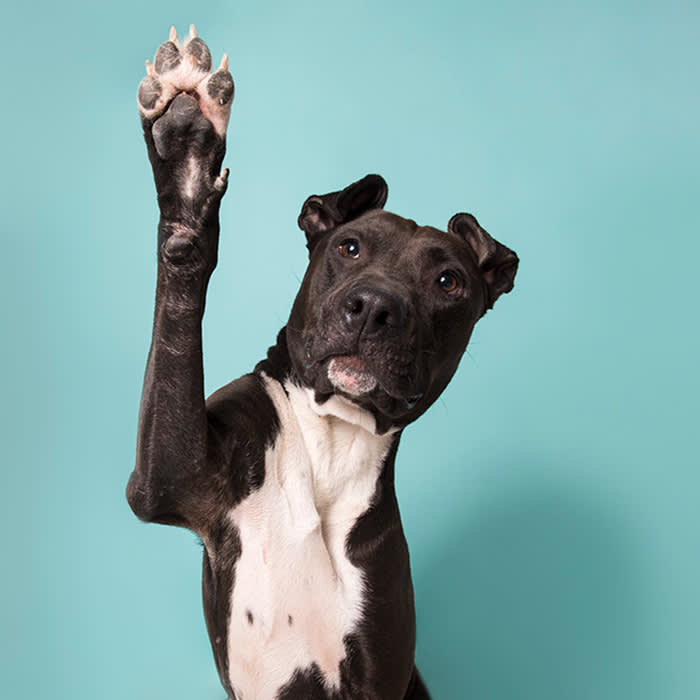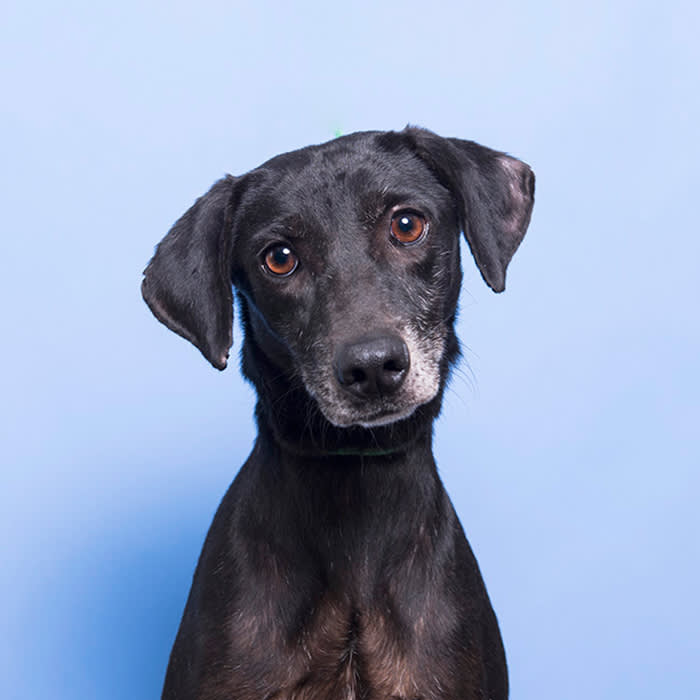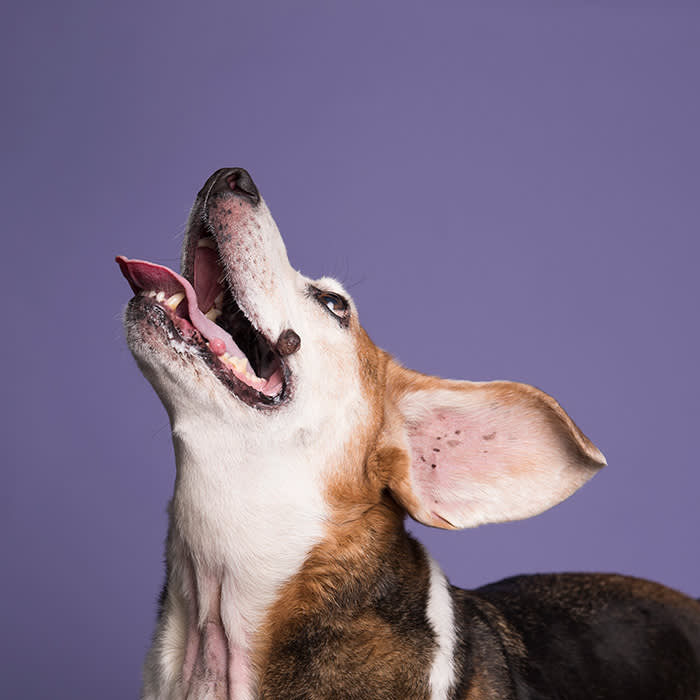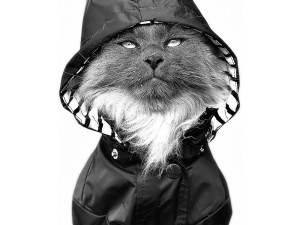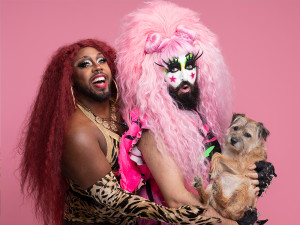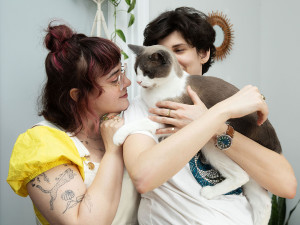Sophie Gamand’s Secrets to Snapping Incredible Dog Pics
My pro tips for taking grid-worthy (and life-saving) portraits of your pooch.
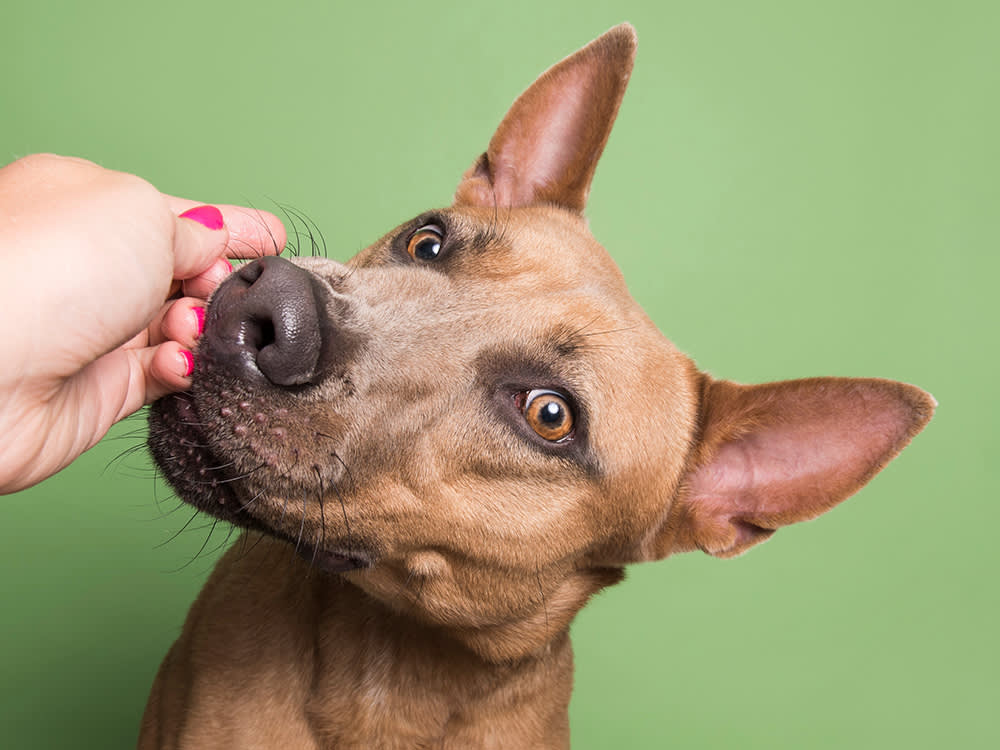
Share Article
Sophie Gamandopens in new tab is an artist, photographer, and rescue advocate who travels the world to spotlight dogs in need. With her viral Pit Bull Flower Power series, she has helped find homes for hundreds of homeless dogs.
There are lots of good reasons to learn how to take good photos of your dog. They memorialize the special relationship you have with your pet, their good looks, and their funny expressions. Not only will it take your Instagram game to the next level, it could also (God forbid) be a useful, life-saving tool if your pet ever gets lost. (The open-intake shelters I work with, those who run “lost and found” pages, tell me one of their biggest challenges is to get good photos from families after a pet gets lost.)
Most of my photoshoots are with adoptable pets (visit my website for tips I wrote specifically for rescuers and shelter volunteersopens in new tab). I’ve mastered this type of portrait over the years, but if I try to photograph my own dog MacLovin, it’s a very different experience. Photographing your own dog can be a challenge. It requires a mix of training, trust, and treats. Here’s my approach.
First, teach your dog how to sit and stay.
This is the first thing you ever teach your doggie, regardless of whether you want to photograph them. And if you haven’t done it yet, it’s never too late to work on those skills. Sitting and staying can be used to make walks more enjoyable, especially with reactive pups. It can make a household a little less chaotic, especially at dinnertime. And when it comes to taking photos of your pup, it’s an absolute game changer.

Pay attention to the background.
Photos can easily be ruined by something that happens in the background. If you’re posing your dog for photos, take a moment to make sure the background is clear of clutter and unwanted items like trash bins and dirty laundry — though sometimes there is nothing like a good, solid Photobomb!
For classic headshots in my style, try to find a solid-color background. A flowery bush, a wall of greenery, and brick can also be fantastic backdrops. The sky, too! Or an overall beautiful landscape. If you include a landscape behind your dog, make sure the horizon is straight.
If you want to experiment with creative backgrounds, consider using paper, fabric, vinyl backdrops, a tablecloth, a sheet, butcher paper…there are so many options. For a more polished look, make sure the material doesn’t have wrinkles or creases. Be creative and explore different colors and materials.
Make a color story.
If you like colorful photos, take a moment to familiarize yourself with color theory, or experiment with what colors might complement your dog best. That’s especially fun if you decide to accessorize your dog with a bandana or leash.
If you want a close-up of your dog, pay attention to their eye color. If they have some yellow, consider a background in the yellow family, or on the contrary, a purple background (which is yellow’s complementary color).
Keep calm and don’t overdo it.
Unless you’re going for goofy pictures to celebrate your dog’s fantastic and joyful personality, make sure to start the shoot from a calm place. It’s much easier to ramp up the energy on the shoot than to bring a dog down from a place of high excitement. I see a lot of pet parents overdo it with their companions, and photo sessions can become overwhelming for the pets.
So, if your dog is refusing treats or ignores the noises you’re making, try to find something else that might pique their interest. Don’t repeatedly stick treats under their nose or squeak in their faces. Tune in with your dog and read their body language.
Get your dog’s attention (or cooperation).
Many dogs shy away from the camera and express displacement behaviors or avoidance behaviors (such as looking away or yawning). If your dog is camera shy, consider desensitizing them slowly. Raise your phone/camera briefly and give your pup a treat. Repeat a few times, only exposing your dog to the camera briefly. Do it once a day or twice a day, and increase the duration and frequency of the exercise slowly. Consider starting at a distance, using the zoom on your camera, and moving closer over time.
If your dog isn’t too camera shy, and once they’re sitting nicely, it’s time to get their attention. In my opinion, less is more. If your dog is a goofy extrovert, by all means, go nuts. Otherwise, you might want to start with your voice only. Whisper, talk calmly, use your dog’s favorite words like “Do you want to go for a walk?” (and then you might have to deliver that walk! Don’t promise something you won’t deliver!).
And don’t underestimate the power of a sigh. Sometimes, it’s all it takes to get the perfect photo. If that’s not enough, consider squeaking a toy once or twice. If that doesn’t work, consider enticing them with food. You could also play soundtracks from your phone: singing birds or whining puppies, for example. Just don’t overdo it, to keep it fresh and intriguing.
Another idea to help shy dogs come out of their shell: if they know tricks, ask them to wave their paw or do whatever they enjoy doing, and reward them. You could get some really cute pictures, while helping your doggie relax and enjoy the experience more.
Drop down to eye-level.
Drop down and photograph from the dog’s eye level. That means you will be on your knees or belly a lot! I feel like by photographing from a lower angle, we give the dogs a true opportunity to shine and to step into their own power.
Flaunt that black fur.
Black pets are notoriously difficult to photograph. That is because black fur requires more light, and it can be difficult to capture the features of a black pet. Your best bet is probably to take your dog outside and photograph them in a shaded area. You could use a large sheet of white paper or foil, which you place between the dog and yourself and aim toward your dog, to capture and bounce some of the ambient light directly onto the dog. This will help add more light to the portrait, but it’s a little technical.
If you’re using your phone, you can adjust the setting (the exposure) to make sure enough light fills that fur. But even if you get a dark image, you can still save it by going into edit mode on your phone and playing around with different settings. If you are ready to take your retouching to yet another level, check out this tutorialopens in new tab I created for Lightroom.
Snap away.
Once your dog is comfortable and cooperating, go for it! Try different angles and ideas; change the perspective. I love the various lenses that the recent iPhones have (the wide angle one is SO fun!).
Select the best images.
One of a photographer’s most important tasks is to select the right image to use during the editing phase. I browse through the photos I captured, and I pull the images that immediately speak to me. If I get an emotional reaction from the image, I select it.
Share the pics on social media.
Dog parents have a duty to try to outnumber the pictures of human babies out there. We want to see your pup!

Sophie Gamand
Dog photographer. Empathetic storyteller. Tireless advocate. Sophie Gamand is changing the world one camera click at a time. She travels around the world to shine a light on dogs in need. Through her social media following and photo exhibitions, she has helped find homes for hundreds of her canine muses, and raises funds for rescue organizations.
Related articles
![Black and white photo of a cat wearing a hooded jacket]()
Photographer Jason Nocito’s Pet Portrait Tips
The photographer who’s shot everyone from Billie Eilish to Lil Wayne shares his Pet Portrait-mode tips via an Apple Virtual Studio sesh.
![Gerrard Gethings]()
Cats, Dogs, and Drag Queens — Through the Lens of Gerrard Gethings
The photographer talks about his Border Terrier assistant, the likeness of people and their pets, and going behind the scenes with drag queens.
![Photo by Heike Schneider-Matzigkeit]()
I’m with the Band: Heike Schneider-Matzigkeit Photographs Rock Stars & Dogs
The Berlin-based artist has shot Amy Winehouse and Iggy Pop. Her new gig is taking portraits of creatives and their pets.
![Two woman with short dark hair, one holding a gray and white cat while the other leans against the woman holding the cat, to look at the cat]()
Behind the Scenes of a “Girls and Their Cats” Photo Shoot
Photographer BriAnne Willis has captured over 300 “cat ladies.” Here’s how she got the shot of my feline family. (Hint: deli turkey had something to do with it.)

